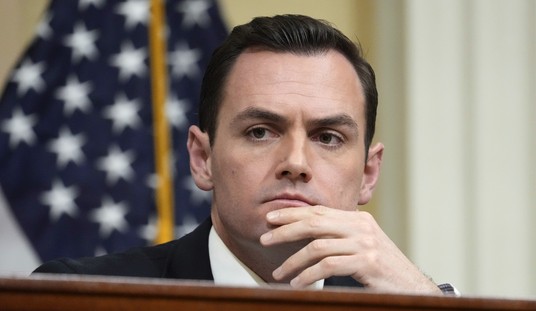Following boldly in the footsteps of the European Union, California is set to implement a cap-and-trade system in 2013—the fruition of AB 32, the Global Warming Solutions Act of 2006. The bill was passed with gusto in sunnier economic times before we knew California had endured a net outmigration over the past 10 years. This ought to help. The New York Times reports on Morning Star, a tomato producer figuring out how to withstand the financial blow of the new system. Morning Star, it notes, has to stay in California, for proximity to tomato farms, but it may now struggle to compete with foreign producers. Other companies don’t have to stick around:
Companies are trying to figure out how this will affect their bottom lines and have lobbied state regulators to minimize the costs. In the meantime they are weighing their options. Should they stay and adapt or move operations elsewhere? Should they retrofit and innovate to reduce emissions? Should they swallow the regulatory costs or pass them on to customers?…
About 600 facilities with hefty emissions are covered by the Global Warming Solutions Act of 2006. Oil refiners, electric utilities and cement makers, whose greenhouse-gas output totals in the millions of metric tons annually, are the biggest. But over all, dozens of industries are affected.
In recent months, as the start date of the new cap-and-trade program neared, California regulators have fine-tuned the rules, industry by industry, to avoid imposing severe economic hardship while trying to keep the rules stringent. It is a delicate balance. Regulators do not want California companies to lose their competitive edge, because that could make other state governments reluctant to adopt this approach.
The Times notes, the decision to simply move, pay to emit, or pay for emissions-reducing technology may be do-or-die for some companies:
The state’s Air Resources Board is using an array of policies to reach its intended goal of reducing emissions to 1990 levels by 2020. It has tried to structure the cap-and-trade program to encourage industry investment in energy efficiency that could cut costs as well as lower emissions. Investing in energy efficiency may make sense for companies under California’s rules, Dr. Fowlie said, “but if they are making them before their competitors, that could be fatal.”
Companies like Morning Star will be given free credits to cover most of their emissions in the first year of the program in the effort to smooth the transition, but their costs will gradually go up over the years.
The California Air Resources Board— CARB, get it?—held its first auction for credits in November despite a legal challenge from the Chamber of Commerce.
The state government sold $233 million in permits to pollute at that auction, which Cal Watchdog noted at the time, means the state is touting its “success” by crowing over the 23 million tons of pollution it’s not preventing:
CARB apparently considers it a success when industries, instead of reducing pollution, pay off government. But the definition of success should be when industries have to buy a minimum number of permits because they already have reduced their emissions. CARB seems to meet the classic definition of a bureaucracy where the manifest function — in this case, to reduce pollution — has been surpassed by its latent function — to tax industries and public utilities.
CARB reported that the money taken from businesses will be re-circulated back to electricity ratepayers in the form of a rebate called a “climate dividend.” But why have an auction in the first place if CARB is just rebating the monies? This is why the state Legislative Analyst’s Office believes a pollution permit auction is not needed to accomplish pollution-reduction goals. Why doesn’t CARB instead use its conventional regulatory powers to enforce excess air pollution?
Hey, how’s the carbon market doing elsewhere?
The World Bank cites a host of reasons for the decline in interest and activity.
Cap-and-trade legislation failed not only in the United States, they point out, but also in Japan and Australia as political interest in legally mandated carbon markets was hit badly. Weak commitment to carbon trading was also evident in South Korea, where, despite the passage of a cap-and-trade system in its legislature, lawmakers later decided to postpone the launch of an emissions trading scheme to 2015.
The year also saw the carbon market’s reputation take a beating. A rash of fraudulent activity and outright theft of emissions allowances from various national registries disrupted spot trading activity for an extended period and shook confidence in cap and trade as a solution to the climate change problem.
But mainly the carbon markets are becoming a victim of waning government and public interest in cap and trade, coupled with the failure of governments to agree on a replacement to the Kyoto Protocol, which will effectively come to an end in December 2012 if nations don’t sign onto another commitment period.
As a result, the European Union remains the only significant host to carbon trading. Estimates suggest that the Emissions Trading System, which E.U. governments set up to comply with the Kyoto pact, accounts for almost 97 percent of the global carbon market.
Meanwhile, carbon emissions in the U.S. are at a 20-year low without major government interference and before the California law is imposed on 350 employers. But as with the decades-low violent crime and gun crime rates, achieving their purported goal won’t keep our statist friends bent on confiscation.
I’m telling you, it would have been more efficient to elect this guy governor.

Exit question (Allahpundit™): Guess who Morning Star says is going to be paying the extra costs in ketchup and tomatoes?








Join the conversation as a VIP Member